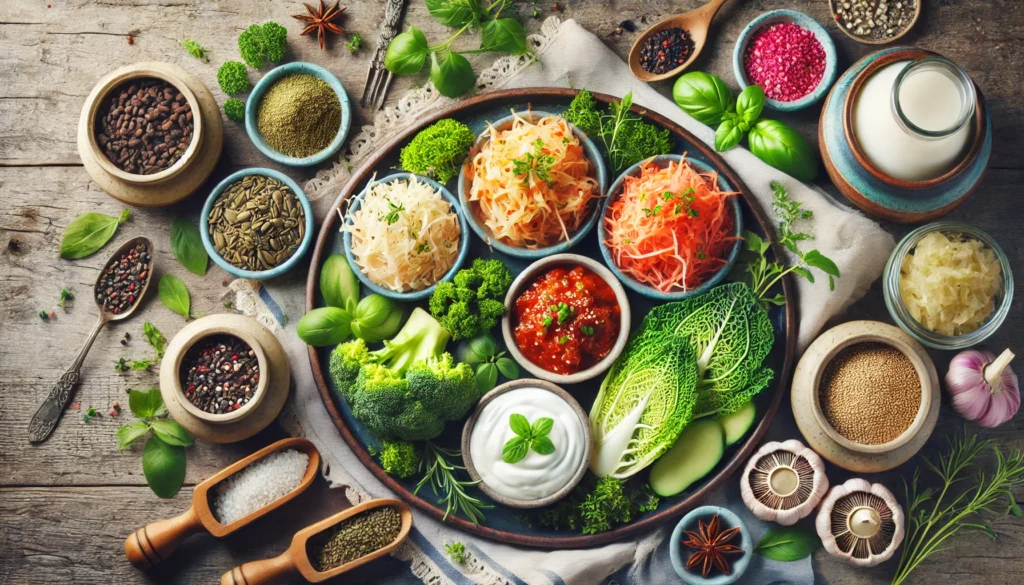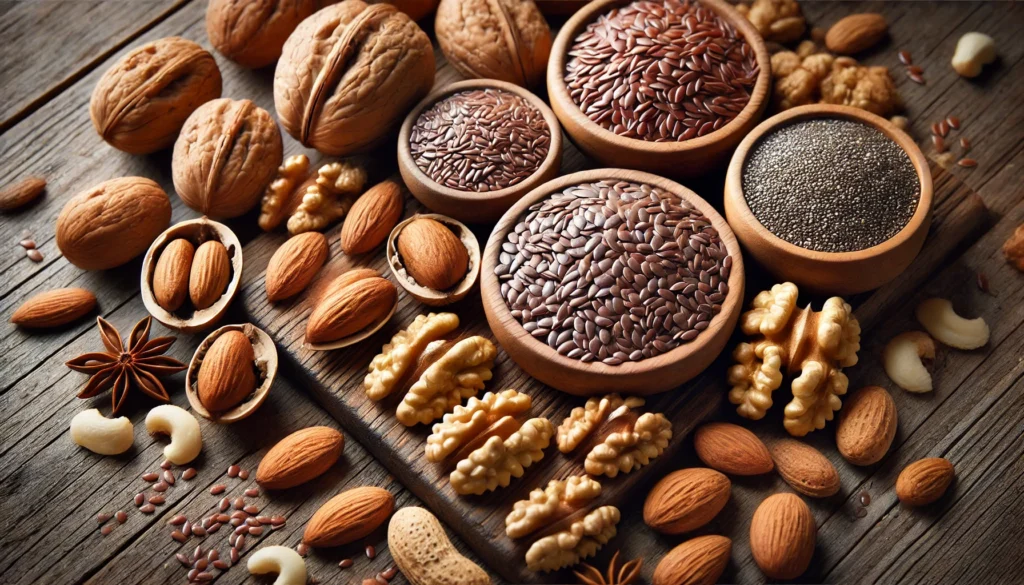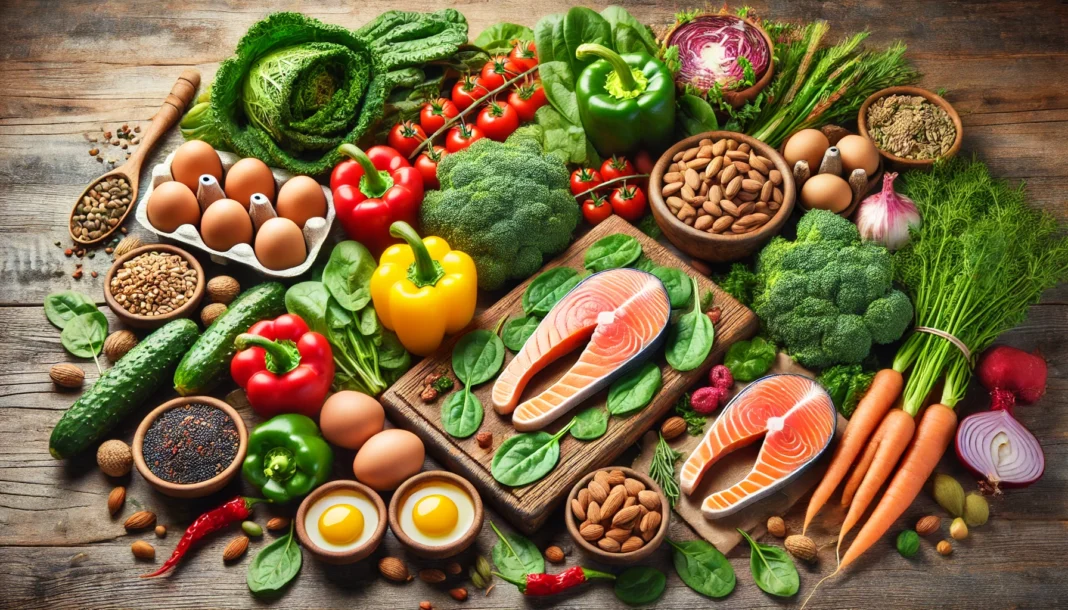Introduction: Understanding Bioavailability and Nutritional Impact
The significance of nutrition extends beyond the mere consumption of food; it is the absorption and utilization of nutrients that truly determine their impact on health. Bioavailability, the degree to which nutrients are absorbed and utilized by the body, is a crucial factor in evaluating the effectiveness of a diet rich in essential vitamins and minerals. Many individuals strive to improve their nutritional intake but fail to consider whether the foods they consume provide readily absorbable nutrients. Understanding what foods have the highest bioavailable nutrients allows individuals to optimize their dietary choices for improved health and longevity.
You may also like: What Supplements Should I Take? The Best Bioavailable Nutrients for Natural Energy and Vitality
In this discussion, we will explore what are some foods that have nutrients with superior bioavailability, highlighting the best sources of essential vitamins, minerals, and phytonutrients. By examining a food that has optimal absorption characteristics and analyzing its role in human health, we can construct a more effective nutrition food list. The goal is not only to identify nutritious foods but also to uncover how these foods interact with the body’s biological processes to enhance overall well-being.

The Science of Nutrient Bioavailability
Before delving into a detailed nutrition food list, it is essential to understand the principles of bioavailability and how they influence the body’s ability to utilize nutrients efficiently. Some nutrients require specific conditions for optimal absorption, while others may be inhibited by dietary or environmental factors. For example, calcium absorption is significantly enhanced when consumed with vitamin D, whereas the presence of phytates in certain plant-based foods can hinder mineral absorption. Thus, knowing how to pair nutrients and food to get the most out of meals is an invaluable aspect of nutritional science.
Moreover, certain food-processing methods can either enhance or reduce the bioavailability of nutrients. Fermentation, sprouting, and cooking can improve the absorption of minerals like iron and zinc, while excessive processing and refining often strip foods of their nutritional integrity. By understanding these interactions, we can make more informed dietary choices that promote optimal health and vitality.
Essential Vitamins and Minerals: Sources and Bioavailability
Among the most critical nutrients for human health are vitamins and minerals, each playing a specific role in physiological functions. Below, we explore the best sources of these nutrients and analyze their bioavailability.
Vitamin C: Enhancing Immunity and Absorption
Vitamin C is an essential nutrient known for its powerful antioxidant properties and its role in collagen synthesis. It also enhances the absorption of non-heme iron, making it a valuable addition to a diet rich in plant-based iron sources. What are some foods that have nutrients like vitamin C? Some of the most bioavailable sources include citrus fruits, bell peppers, and strawberries. Research indicates that consuming vitamin C alongside iron-rich plant foods significantly improves iron absorption, reducing the risk of deficiency.
Iron: Heme vs. Non-Heme Absorption
Iron plays a crucial role in oxygen transport and energy metabolism. However, not all sources of iron are equally bioavailable. Heme iron, found in animal products like red meat, poultry, and seafood, is more readily absorbed by the body compared to non-heme iron found in plant-based foods such as spinach, lentils, and tofu. To maximize iron absorption, pairing non-heme sources with vitamin C-rich foods can significantly improve bioavailability.
Omega-3 Fatty Acids: Brain and Heart Health
Omega-3 fatty acids are essential for cognitive function and cardiovascular health. The most bioavailable sources include fatty fish like salmon, mackerel, and sardines. Plant-based sources such as flaxseeds and walnuts contain alpha-linolenic acid (ALA), which the body converts into the active forms eicosapentaenoic acid (EPA) and docosahexaenoic acid (DHA), albeit at a lower conversion rate. Thus, individuals following plant-based diets should consider algae-based omega-3 supplements to optimize intake.
The Role of Whole Foods in Nutrient Absorption
While supplementation can provide isolated nutrients, whole foods offer a complex matrix of vitamins, minerals, fiber, and phytonutrients that work synergistically to enhance absorption. Diet rich in whole, minimally processed foods ensures that nutrients are consumed in their most natural and bioavailable forms.
Whole grains, for instance, are excellent sources of B vitamins, fiber, and essential minerals. However, refining grains removes the bran and germ, significantly reducing their nutritional content. Similarly, consuming whole fruits instead of fruit juices ensures a more balanced intake of fiber and antioxidants, regulating blood sugar levels and enhancing satiety.
Foods to Get Maximum Nutritional Benefit
When curating a highly nutritious diet, selecting foods with superior bioavailability is key. What foods have the highest nutritional benefits depends on various factors, including preparation methods and individual dietary needs. Here are three excellent choices for maximizing nutrient absorption:
- Eggs: A food that has highly bioavailable protein, choline, and essential vitamins such as B12 and D. The bioavailability of egg protein is among the highest, making it an excellent source of nourishment for muscle maintenance and overall health.
- Leafy Greens: A diet rich in leafy greens like kale, spinach, and Swiss chard provides an abundance of vitamins A, C, and K, as well as essential minerals like magnesium and potassium. To improve the bioavailability of fat-soluble vitamins in leafy greens, pairing them with healthy fats, such as olive oil or avocado, is recommended.
- Fermented Foods: Fermentation enhances the bioavailability of various nutrients by breaking down antinutrients that inhibit absorption. Foods like yogurt, kimchi, and sauerkraut not only provide beneficial probiotics but also make minerals more accessible to the body.

Frequently Asked Questions (FAQ) on Nutrient-Rich Foods
1. What are some foods that have nutrients essential for daily health?
A variety of foods provide essential nutrients that support overall well-being. Leafy greens such as spinach and kale are rich in vitamins A, C, and K, while also offering iron and fiber. Fatty fish, like salmon and mackerel, provide omega-3 fatty acids that support brain health and cardiovascular function. Nuts and seeds, such as almonds and chia seeds, are excellent sources of healthy fats and protein. Including a diverse selection of nutrient-rich foods in your diet ensures balanced nutrition and long-term health benefits.
2. Can you list 3 foods this nutrient is found in for different essential vitamins?
Absolutely! For vitamin C, citrus fruits like oranges, bell peppers, and strawberries are excellent choices. When looking for calcium, dairy products such as milk, yogurt, and cheese provide high amounts of this bone-strengthening mineral. If you need more iron in your diet, red meat, lentils, and spinach are fantastic sources. Understanding which foods contain specific nutrients allows you to build a diet rich in essential vitamins and minerals. Rotating these foods in your meals ensures variety and comprehensive nutrition.
3. What are the nutrient food groups that contribute to optimal health?
Nutrient-dense foods fall into several key categories that contribute to overall wellness. Proteins, such as lean meats, beans, and tofu, aid in muscle repair and immune function. Whole grains like quinoa, brown rice, and oats provide long-lasting energy and essential fiber. Fruits and vegetables deliver a wide range of vitamins and antioxidants that help protect against diseases. Healthy fats, such as those found in avocados and olive oil, are crucial for brain function and hormone regulation. Consuming a balanced selection from these groups ensures a well-rounded nutrition food list.
4. What healthy sources of protein are best for an active lifestyle?
Active individuals require high-quality protein sources to support muscle recovery and sustained energy levels. Eggs are a complete protein source with essential amino acids that aid in tissue repair. Lean poultry, such as chicken and turkey, offers low-fat, high-protein options for muscle development. Plant-based sources, including quinoa, lentils, and chickpeas, provide ample protein and fiber to maintain digestive health. Fatty fish, such as salmon, supplies both protein and omega-3 fatty acids for joint and heart health. Incorporating these foods into your diet supports overall endurance and recovery.
5. What are some food options to get more fiber into your diet?
Fiber is essential for digestive health, and many foods offer excellent sources of this nutrient. Whole grains like oats, barley, and whole wheat products provide substantial amounts of fiber to support gut function. Legumes, including black beans, lentils, and chickpeas, are high in fiber and protein, making them a nutritious choice. Fruits like apples, pears, and berries offer natural fiber that aids digestion and maintains blood sugar levels. Vegetables such as broccoli, Brussels sprouts, and carrots also contribute to daily fiber intake. Including a mix of these foods in your meals promotes digestive balance and overall health.
6. What foods have high levels of antioxidants and why are they important?
Antioxidants play a critical role in protecting cells from damage caused by free radicals. Blueberries, strawberries, and blackberries are packed with antioxidants such as vitamin C and flavonoids, which support immune function and skin health. Dark chocolate, particularly with high cocoa content, contains powerful antioxidants known as polyphenols, benefiting heart health. Green tea is another excellent source, offering catechins that help reduce inflammation and promote brain function. Nuts and seeds, such as walnuts and flaxseeds, provide vitamin E, an antioxidant that supports skin and eye health. Regularly consuming these foods helps maintain cellular health and reduces the risk of chronic diseases.
7. What is a food that has both protein and healthy fats?
Certain foods provide both high-quality protein and beneficial fats, making them ideal for a balanced diet. Salmon is an excellent example, offering lean protein along with heart-healthy omega-3 fatty acids. Nuts like almonds and walnuts provide a combination of protein, fiber, and unsaturated fats that support cardiovascular health. Eggs are another great option, as they contain essential amino acids and healthy fats in the yolk. Greek yogurt, particularly full-fat varieties, supplies both protein for muscle maintenance and fats for sustained energy. These nutrient-dense options provide essential fuel for an active and healthy lifestyle.
8. What foods should be included in a diet rich in essential minerals?
A diet rich in essential minerals includes foods that provide calcium, iron, magnesium, and potassium. Dairy products like cheese and yogurt are excellent sources of calcium for bone health. Leafy greens such as spinach and Swiss chard supply iron and magnesium, essential for energy production and muscle function. Bananas, sweet potatoes, and beans are rich in potassium, which helps regulate blood pressure and support heart function. Nuts and seeds, particularly pumpkin seeds and almonds, are packed with magnesium, which aids in muscle relaxation and nerve function. Incorporating these foods into daily meals ensures adequate mineral intake for optimal health.
9. What is a nutrition food list for building muscle and maintaining strength?
A well-structured nutrition food list for muscle growth includes high-protein and nutrient-dense foods. Lean meats like chicken breast and turkey provide essential amino acids for muscle repair. Eggs and dairy products such as Greek yogurt supply protein and healthy fats for muscle recovery. Plant-based options like quinoa, tofu, and black beans offer protein along with essential minerals. Nuts, seeds, and avocados contribute healthy fats and micronutrients that support overall muscle maintenance. Combining these foods with resistance training helps build and sustain muscle mass effectively.
10. What foods have natural energy-boosting properties?
Several nutrient-rich foods provide sustained energy throughout the day. Bananas are an excellent source of quick-digesting carbohydrates and potassium, supporting muscle function. Whole grains like brown rice and oatmeal release energy slowly, keeping blood sugar levels stable. Nuts such as almonds and cashews contain protein, healthy fats, and magnesium, preventing energy crashes. Leafy greens like kale and spinach provide iron, which is crucial for oxygen transport and reducing fatigue. Consuming these foods regularly can enhance overall energy levels and support daily productivity.

Conclusion: Optimizing Nutrition Through Bioavailable Foods
Understanding what are the nutrient food choices with high bioavailability allows individuals to construct diets that maximize health benefits. By incorporating a food that has superior absorption properties and carefully pairing nutrients to enhance their effectiveness, individuals can improve overall nutritional intake. The integration of diverse, whole foods into the diet provides a sustainable and effective way to ensure optimal nutrient absorption, leading to long-term health benefits.
When selecting foods, considering bioavailability is just as important as considering nutrient density. A well-balanced diet rich in whole foods, healthy sources of essential vitamins and minerals, and strategic nutrient combinations is the foundation of optimal health. By continually making informed dietary choices, individuals can ensure they are receiving the maximum nutritional benefit from the foods they consume.
bioavailable nutrients, nutrient absorption, best foods for health, diet optimization, whole food nutrition, maximizing nutrient intake, nutrient-rich foods, best sources of vitamins, plant-based nutrition, bioavailability in food, holistic health supplements, nutrient-dense foods, improving vitamin absorption, essential minerals, healthy diet strategies, functional nutrition, nutrient synergy, optimal health diet, whole food benefits, diet rich in vitamins
Further Reading:
Comparative bioavailability of vitamins in human foods sourced from animals and plants
Disclaimer
The information contained in this article is provided for general informational purposes only and is not intended to serve as medical, legal, or professional advice. While NewsHealthWatch strives to present accurate, up-to-date, and reliable content, no warranty or guarantee, expressed or implied, is made regarding the completeness, accuracy, or adequacy of the information provided. Readers are strongly advised to seek the guidance of a qualified healthcare provider or other relevant professionals before acting on any information contained in this article. NewsHealthWatch, its authors, editors, and contributors expressly disclaim any liability for any damages, losses, or consequences arising directly or indirectly from the use, interpretation, or reliance on any information presented herein. The views and opinions

